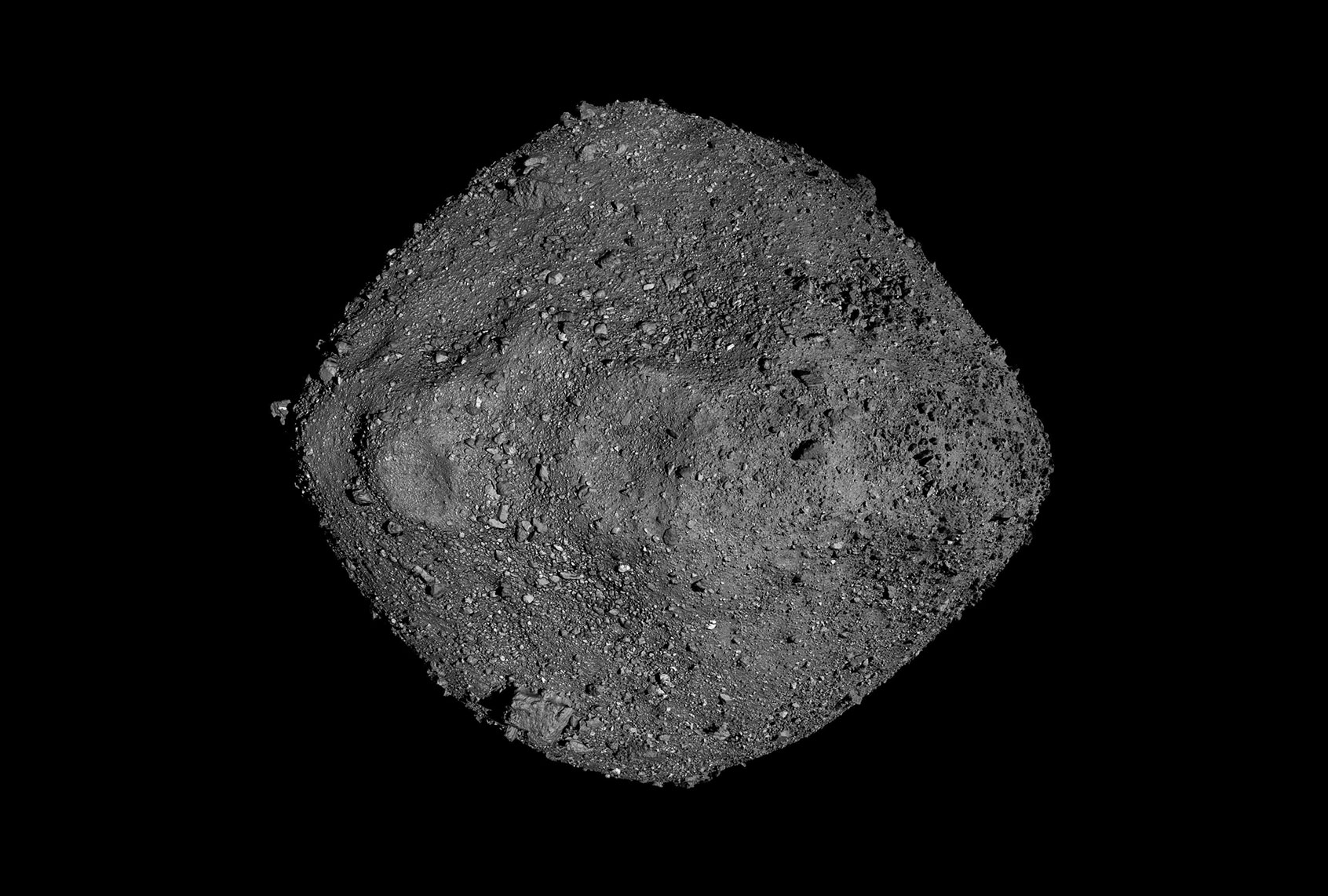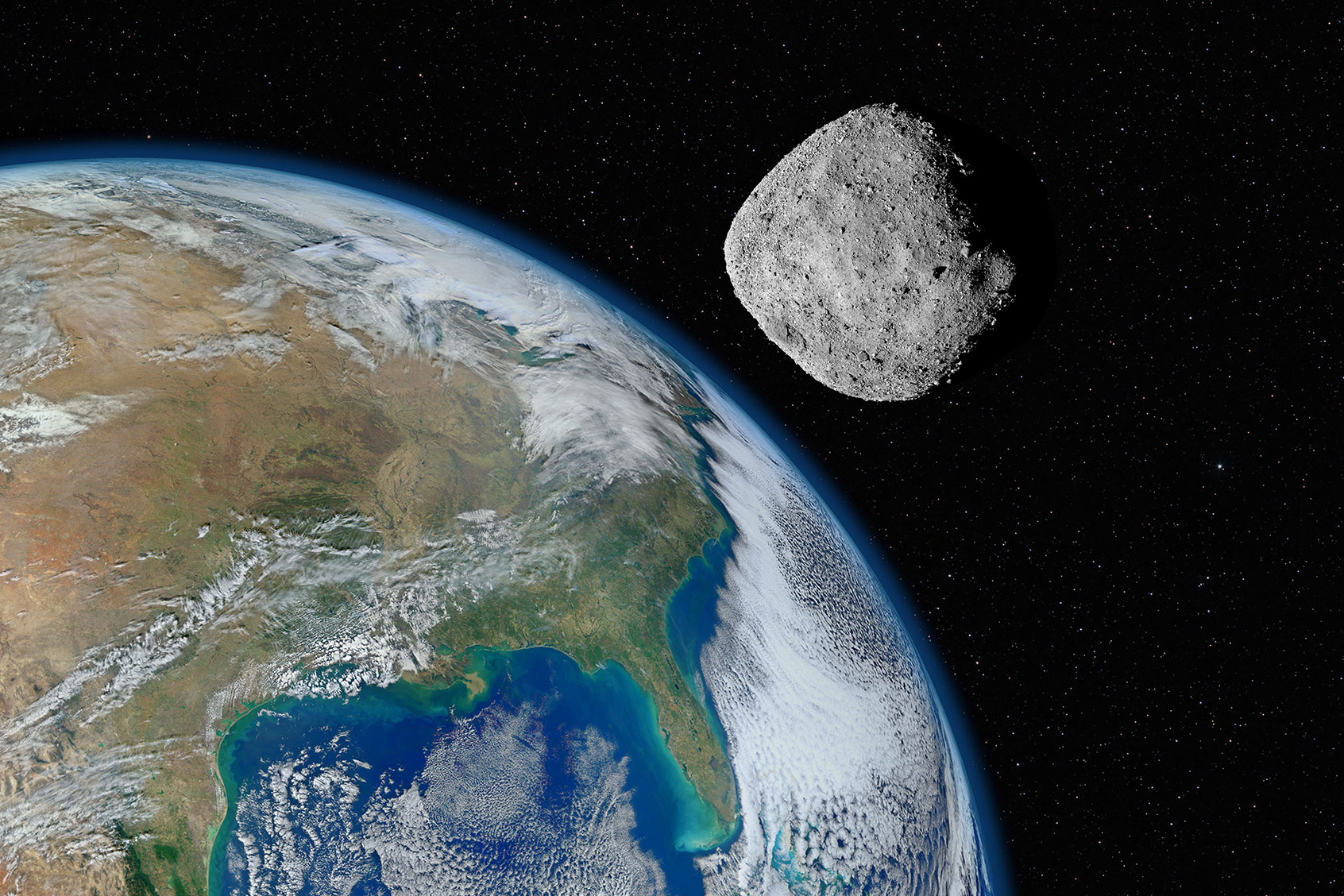On Sunday, September 24 at approximately 10:42 EST, a NASA mission known as OSIRIS-REx will return to Earth after having collected samples from an asteroid named Bennu. Some experts also predict that 159 years from now, there’s a good chance Bennu could collide with Earth.
Such an event would be extremely unlucky for life on this planet, with potential for catastrophic destruction. Bennu is roughly 1,640 feet (500 meters) wide — or as large as the Empire State Building — and upon impact it would release 1,200 megatons of energy, or 24 times as much as the most powerful nuclear weapon built so far. This would equate to roughly the energy produced by 22 atomic bombs.
What do we know for sure about this celestial behemoth that is barreling toward Earth, conjuring up images from sci-fi disaster movies like “Deep Impact” and “Armageddon” as it does so? Here’s everything we know so far about Bennu and what we hope to learn once a sample of it (ideally) returns on Sunday.
There is a morbid appropriateness to the date when OSIRIS-REx is expected to make contact with Earth and return from its mission. It comes
exactly 159 years to the day before Bennu — which NASA considers among the asteroids most likely to pose a threat to our planet — is predicted to itself collide with Earth.
The impact probability associated with that date is still infinitesimally remote — a mere 0.037 percent. In general scientists are best able to come up with mere estimates for the various possible outcomes involved in this asteroid. Nothing can be known with certainty. Of course, the odds that Bennu hits Earth go up to a more sobering
1 in 1,750 by 2300.
To come up with a more accurate sense of the asteroid’s trajectory and composition — which will help scientists figure out if Bennu will ever strike Earth and, if so, how to destroy it — NASA launched OSIRIS-REx in 2016. In the process they discovered a
world out of a gothic pulp novel. The asteroid was formed from primordial debris leftover from the earliest days of our solar system’s creation, some 4.5 billion years ago. The asteroid is very dark and has very few flat surfaces, covered in jagged peaks and massive boulders.
Want more health and science stories in your inbox? Subscribe to Salon’s weekly newsletter Lab Notes.
Upon arriving in 2018, OSIRIS-REx was
nearly destroyed when the smooth surface that scientists expected on Bennu proved instead to be a “bouldery hellscape.” As
chief scientist Dante Lauretta later told Space.com in an earlier interview, “When we designed the spacecraft, we had a design targeting accuracy [for the landing] of about 50 meters [164 feet]. The thermal properties, also the radar properties [of Bennu], really looked like a smooth surface. So when I first saw that [the surface was completely different], I really thought we might be in trouble there.”
The mission nevertheless succeeded and
OSIRIS-REx since reported data to “better predict where Bennu will be when it makes its close approach to Earth more than a century from now.”
While it is unnerving to imagine even the remotest possibility of an asteroid or comet striking Earth, experts agree that this event is far less likely than Hollywood blockbusters might make appear to be the case. “Such an impact is very, very, very improbable in the lifetime of anyone,” Dr. David Stevenson, a planetary scientist at the California Institute of Technology,
wrote to Salon in May. “It would be unwise to obsess over such events when there are things that happen much more often to be concerned about.”
Stevenson observed at the time that the average duration between extinction-size asteroid strikes on Earth is tens or hundreds of millions of years. “The time between impacts is probably almost a million times the lifetime of any particular individual, probably even much longer than the total survival time of the human species based on what we know about biological evolution,” Stevenson concluded.
 This mosaic of Bennu was created using observations made by NASA’s OSIRIS-REx spacecraft that was in close proximity to the asteroid for over two years. (NASA/Goddard/University of Arizona)
This mosaic of Bennu was created using observations made by NASA’s OSIRIS-REx spacecraft that was in close proximity to the asteroid for over two years. (NASA/Goddard/University of Arizona)
If humanity is destroyed by a giant chunk of space rock known as Bennu, at least we will know that a legend of musical rock helped us learn a little more about it before the end was nigh. While NASA struggled to find a smooth patch on Bennu to land OSIRIS-REx, Queen guitarist Brian May reached out to help. In addition to being a musical genius, May is also an astronomy PhD after acquiring his degree 30 years following his music career-hiatus.
May offered his insights to the intrepid scientists, as he specializes in stereoscopic imaging. This form of imaging replicates how human eyes perceive surrounding space in three dimensions, which has helped with Mars missions. Even though OSIRIS-REx did not have a stereo camera, May chose images of various spots from Bennu’s surface as taken at different angles. He then processed them for 3D viewing. Thanks to May’s help, OSIRIS-REx’s team eventually did land their vehicle in a crater that was sufficiently free of obstacles.
“Once you have a stereo image of that particular potential landing site, you can really make that instinctive judgment as to whether things are going to work out,” May told Space.com in an earlier interview. “You see that there is this boulder, how much slope there is, how dangerous it is to get on and to get off.”
More information about Bennu will become available in the coming weeks.
Read more
about astronomy
 This mosaic of Bennu was created using observations made by NASA’s OSIRIS-REx spacecraft that was in close proximity to the asteroid for over two years. (NASA/Goddard/University of Arizona)
This mosaic of Bennu was created using observations made by NASA’s OSIRIS-REx spacecraft that was in close proximity to the asteroid for over two years. (NASA/Goddard/University of Arizona)
